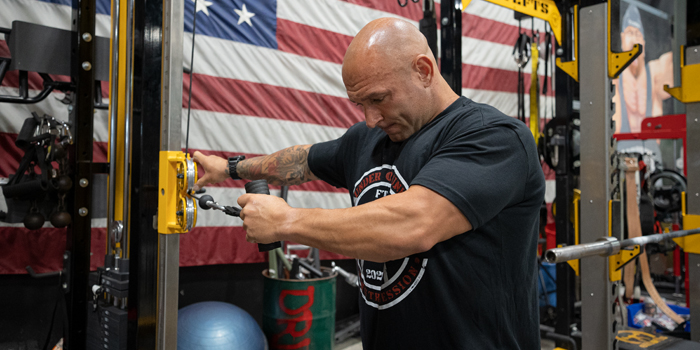
In a recent study by Stainiszewski et al. (2020) they looked to compare the advantages of matching the strength curve of a biceps preacher curl with the resistance profile of the machine. All our muscles have certain strength curves to them, meaning they re stronger in one position and relatively weak in another. The lat pulldown we are very strong at the beginning of the exercise and get weaker as the muscle gets shorter. In an ideal world the machine would be very heavy at the beginning of the exercise and start to get lighter towards the end so you can fully shorten the muscle and get the same amount of effort at each end of the spectrum. In theory this makes a lot of sense and has become a very popular trend in the bodybuilding community. This paper followed an 8-week training study designed to test this idea with 4 groups. Two groups did a hypertrophy style program and the other a strength program and within the groups one matched the strength curve and the other did not. They found similar strength gains in all 4 groups. The hypertrophy group who matched the strength curve did however experience the largest increase in isokinetic peak torque. Even though this paper doesn't blow the roof of the house in favor of matching things perfectly I still see there is benefits to doing so when it makes sense. This does not mean to reverse band everything and spend countless hours trying to move a machine around to create the perfect set up which is now the common trend.
Now from a strength athlete standpoint there may be some validity to this concept as well. Within the research there has been a few studies comparing bands to free weights and the results always seem to favor the use of bands. Studies have included a squat protocol and bench press to improve 1rm versus straight weight alone and in both instances the bands produced better results (Anderson et al., 2008) and (Bellar et al. 2011). Bellar also conducted a study comparing band bench press on improving power and the band group produced greater power output than free weight alone.
Two of the big reasons behind the success of bands is less failed reps, the free weight groups failed more reps and perceived the sets to be harder. A more equal force distribution, the free weight groups tended to slow down once they got past their sticking point while the band groups continued to accelerate. These are just adding more tools to the tool box that will allow you to help improve your athletes.
References:
Staniszewski M, Mastalerz A, Urbanik C. Effect of a strength or hypertrophy training protocol, each performed using two different modes of resistance, on biomechanical, biochemical and anthropometric parameters. Biol Sport. 2020 Mar;37(1):85-91. doi: 10.5114/biolsport.2020.92517. Epub 2020 Feb 6. PMID: 32205914; PMCID: PMC7075227.
Anderson, Corey E; Sforzo, Gary A; Sigg, John A The Effects of Combining Elastic and Free Weight Resistance on Strength and Power in Athletes, Journal of Strength and Conditioning Research: March 2008 - Volume 22 - Issue 2 - p 567-574 doi: 10.1519/JSC.0b013e3181634d1e
Bellar DM, Muller MD, Barkley JE, Kim CH, Ida K, Ryan EJ, Bliss MV, Glickman EL. The effects of combined elastic- and free-weight tension vs. free-weight tension on one-repetition maximum strength in the bench press. J Strength Cond Res. 2011 Feb;25(2):459-63. doi: 10.1519/JSC.0b013e3181c1f8b6. PMID: 20512067.








